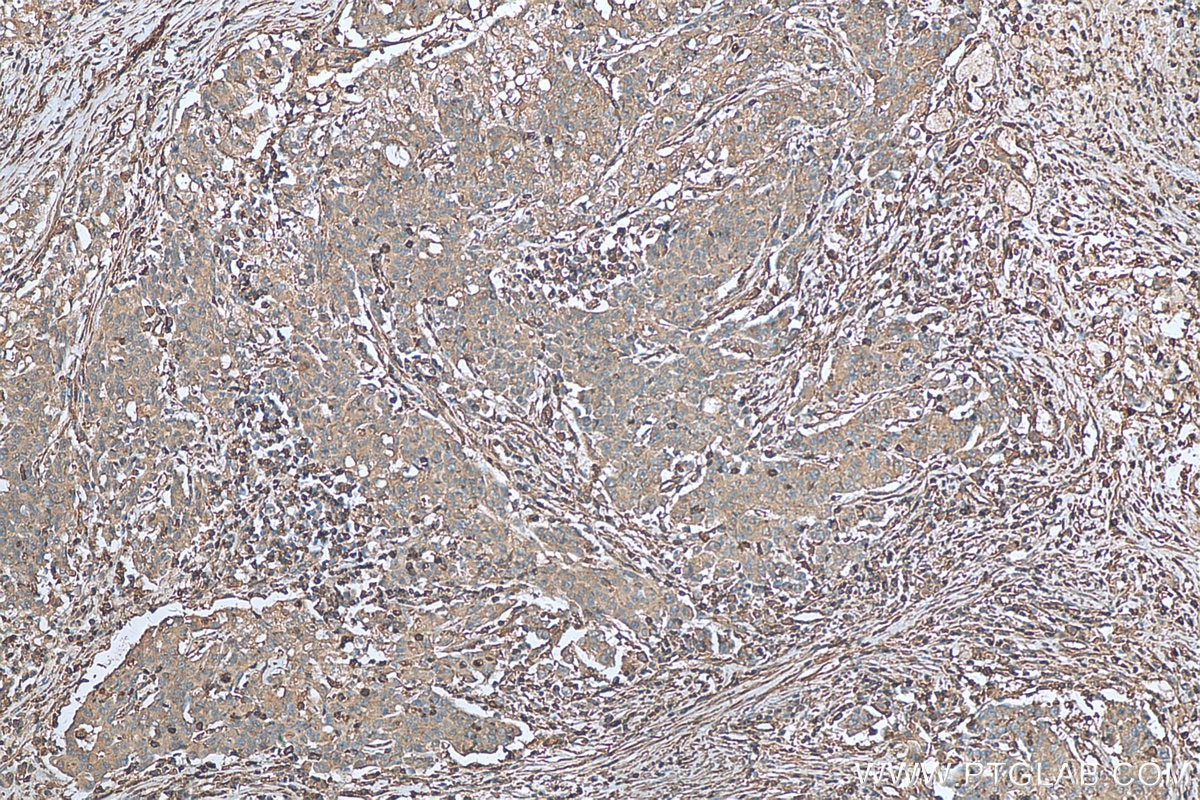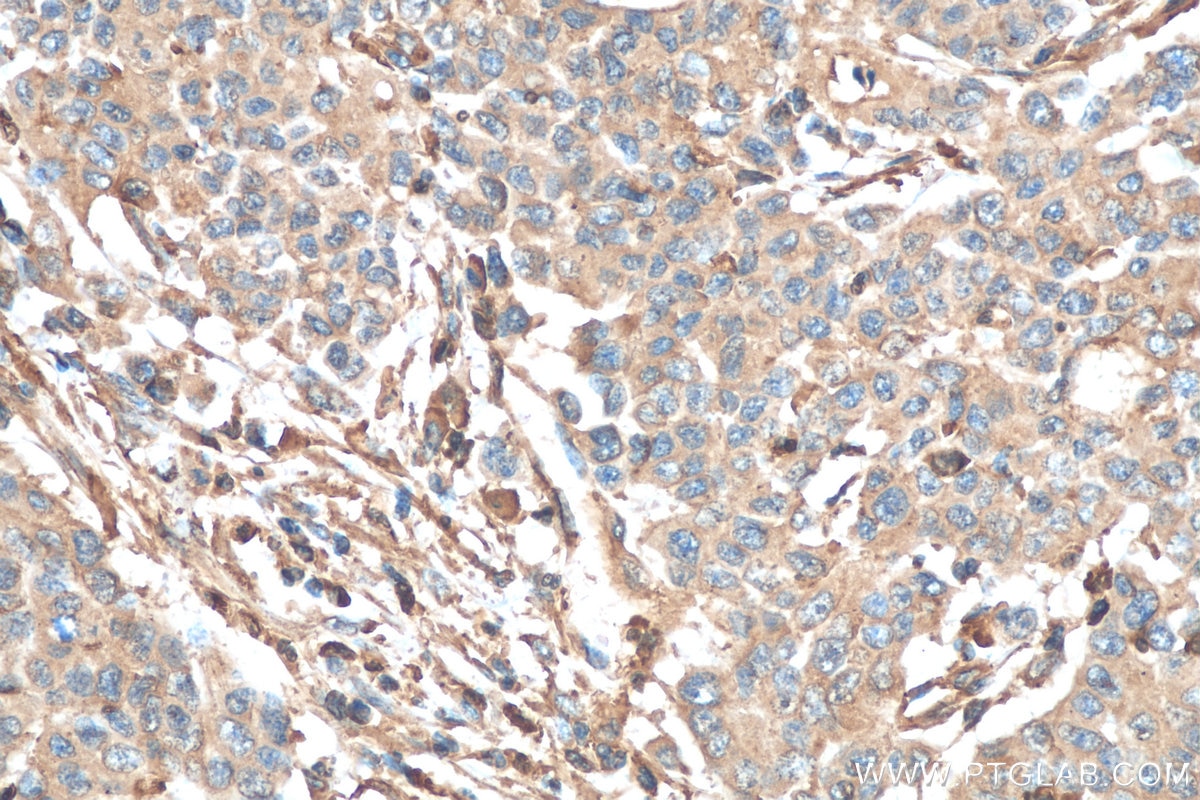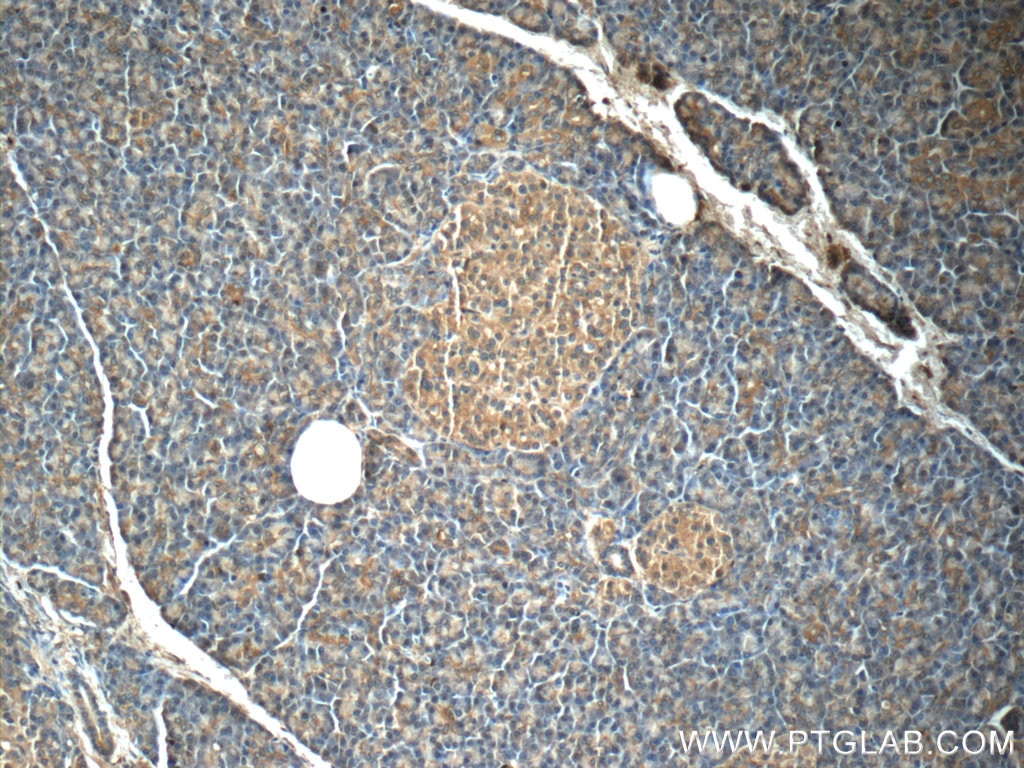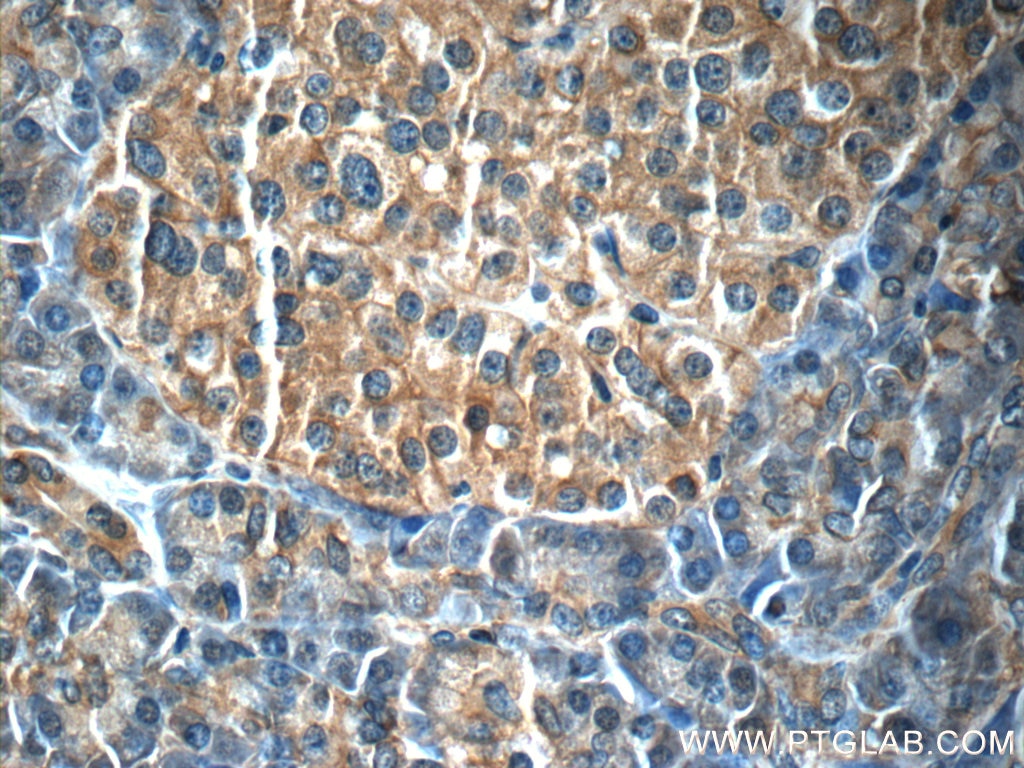Anticorps Monoclonal anti-IL-23A
IL-23A Monoclonal Antibody for IHC, ELISA
Hôte / Isotype
Mouse / IgG1
Réactivité testée
Humain
Applications
WB, IHC, IF, ELISA
Conjugaison
Non conjugué
CloneNo.
1D5D3
N° de cat : 66196-1-Ig
Synonymes
Galerie de données de validation
Applications testées
| Résultats positifs en IHC | tissu de cancer de l'estomac humain, tissu pancréatique humain il est suggéré de démasquer l'antigène avec un tampon de TE buffer pH 9.0; (*) À défaut, 'le démasquage de l'antigène peut être 'effectué avec un tampon citrate pH 6,0. |
Dilution recommandée
| Application | Dilution |
|---|---|
| Immunohistochimie (IHC) | IHC : 1:50-1:500 |
| It is recommended that this reagent should be titrated in each testing system to obtain optimal results. | |
| Sample-dependent, check data in validation data gallery | |
Applications publiées
| WB | See 2 publications below |
| IHC | See 1 publications below |
| IF | See 1 publications below |
Informations sur le produit
66196-1-Ig cible IL-23A dans les applications de WB, IHC, IF, ELISA et montre une réactivité avec des échantillons Humain
| Réactivité | Humain |
| Réactivité citée | Humain |
| Hôte / Isotype | Mouse / IgG1 |
| Clonalité | Monoclonal |
| Type | Anticorps |
| Immunogène | IL-23A Protéine recombinante Ag19406 |
| Nom complet | interleukin 23, alpha subunit p19 |
| Masse moléculaire calculée | 189 aa, 21 kDa |
| Numéro d’acquisition GenBank | BC066268 |
| Symbole du gène | IL23A |
| Identification du gène (NCBI) | 51561 |
| Conjugaison | Non conjugué |
| Forme | Liquide |
| Méthode de purification | Purification par protéine G |
| Tampon de stockage | PBS avec azoture de sodium à 0,02 % et glycérol à 50 % pH 7,3 |
| Conditions de stockage | Stocker à -20°C. Stable pendant un an après l'expédition. L'aliquotage n'est pas nécessaire pour le stockage à -20oC Les 20ul contiennent 0,1% de BSA. |
Informations générales
Interleukin 23 (IL-23) is a member of the IL12 cytokine family and composed of two subunits, IL12p40 and IL23p19. It is produced by antigen presenting cells and has been shown to promote the production and survival of a distinct lineage of T-cells called TH17 cells. A functional receptor for IL-23 (the IL-23 receptor) has been identified and is composed of Il-12Rβ1 and IL-23R. IL-23 is expressed chiefly by the macrophages and DCs. The IL-23R is found on memory T cells, NKT cells, macrophages, DCs, and naive T cells upon activation by TGF-βand IL-6. The main biological effects of IL-23 identified initially consist of stimulation of antigen presentation by DCs, T cell differentiation to Th17 cells, and production of interferon-γ (IFN-γ). IL-23 acts also as an end-stage effector cytokine through direct action on macrophages.
Protocole
| Product Specific Protocols | |
|---|---|
| IHC protocol for IL-23A antibody 66196-1-Ig | Download protocol |
| Standard Protocols | |
|---|---|
| Click here to view our Standard Protocols |
Publications
| Species | Application | Title |
|---|---|---|
Thyroid A MULTICENTER, SINGLE-BLIND, CASE-CONTROL, IMMUNOHISTOCHEMICAL STUDY OF ORBITAL TISSUE IN THYROID EYE DISEASE | ||
J Immunol Polarization and β-Glucan Reprogram Immunomodulatory Metabolism in Human Macrophages and Ex Vivo in Human Lung Cancer Tissues | ||
Cancer Lett PDE4D/cAMP/IL-23 axis determines the immunotherapy efficacy of lung adenocarcinoma via activating the IL-9 autocrine loop of cytotoxic T lymphocytes | ||
Gut IL23 induces IL23R recycling and amplifies innate receptor-induced signalling and cytokines in human macrophages, and the IBD-protective IL23R R381Q variant modulates these outcomes. |





